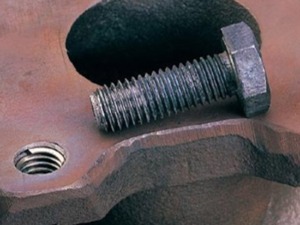Key locking inserts are specialized fasteners designed for high-stress and critical applications. They have several important applications in the aviation field, where the reliability and structural integrity of threaded connections are of utmost importance. Here are some key applications of key-locking inserts in the aviation industry:
1. Aircraft Structural Components: Key-locking inserts are often used in the assembly of critical structural components in aircraft, including the attachment of wings, fuselage sections, and landing gear components. These inserts provide a high-strength threaded connection, ensuring the structural integrity of the aircraft under various loads and stresses.
2. Aircraft Engines: Key-locking inserts play a significant role in aircraft engine construction and maintenance. They are used to secure components like engine mounts, exhaust systems, and turbine blades. These components must withstand extreme temperatures, vibrations, and high torque, making key-locking inserts an ideal choice for maintaining a secure connection.
3. Rotor Systems: In both helicopters and rotary-wing aircraft, the rotor system is a critical component that relies on secure fastenings. Key-locking inserts are used to ensure the reliability and integrity of connections within the rotor systems, such as rotor blades, hubs, and other components.
4. Landing Gear: Landing gear components experience substantial loads and vibrations during takeoff and landing. Key-locking inserts are used in the assembly and maintenance of landing gear systems to provide robust and dependable connections.
5. Aircraft Interior: Key-locking inserts find applications in the fastening of interior components, such as seating structures, overhead bins, and in-flight entertainment systems. They help maintain passenger safety and comfort by ensuring that interior fixtures are securely attached.
6. Avionics and Electronics: Key-locking inserts are utilized in avionics systems and electronic enclosures, ensuring the reliable fastening of components and ensuring the integrity of onboard electronic systems. They help prevent unwanted movement and provide protection against electromagnetic interference.
7. Aircraft Fuel Systems: Key-locking inserts are used in the assembly of aircraft fuel systems to create secure and leak-resistant threaded connections. Maintaining the integrity of these connections is critical to prevent fuel leaks and ensure safety.
8. Aircraft Maintenance and Repair: In the aviation industry, where safety is paramount, key-locking inserts are used in maintenance and repair procedures. They are employed to restore and reinforce damaged or worn threads, reducing the need for costly part replacement.
9. Cabin Pressure Systems: Key-locking inserts are used to maintain airtight and secure seals in cabin pressure systems. This is crucial for ensuring passenger comfort and safety by preventing air leakage.
Key locking inserts are chosen in aviation applications due to their high resistance to vibration, loosening, and pull-out forces. Their ability to maintain a secure connection under extreme conditions and loads makes them a critical component in the construction, maintenance, and repair of aircraft and aviation equipment.










WeChat
Scan the QR Code with wechat